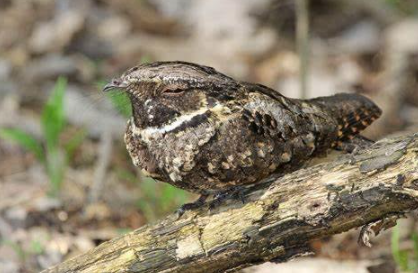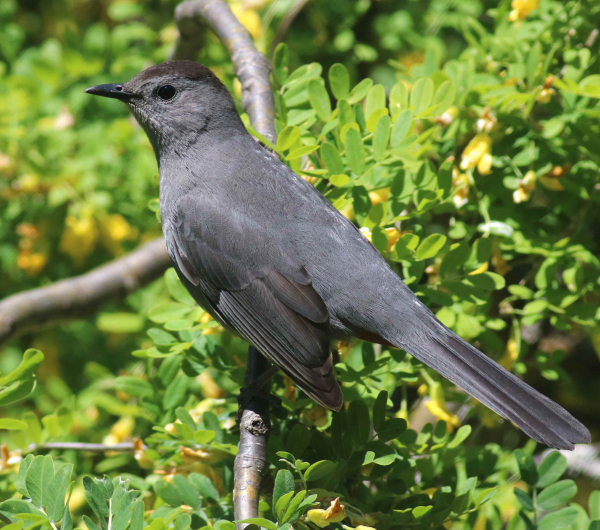Synchronized Whip-poor-will Migration

By attaching GPS tags to Eastern Whip-poor-wills, biologists discovered some surprising new information about the long migrations that eastern whip-poor-wills make from their Midwest nesting range to wintering areas in southern Mexico and Guatemala. The results showed that Eastern Whip-poor-wills from across the Midwest migrated along a similar route at nearly the same time in the fall that concentrated the birds in a relatively small area that includes parts of Oklahoma, Arkansas, and eastern Texas on a single day in early October.
“About half of the entire population of whip-poor-wills nest in Midwest states, and our findings indicate their migration south is very synchronized,” explained Christopher Tonra, co-author of the study and Associate Professor of Avian Wildlife Ecology at Ohio State University. He added that this information highlights a danger to the Midwest whip-poor-will population, which has declined by nearly 70 percent during recent decades.
“It suggests we need to protect the forested habitat in that small area of Oklahoma, Arkansas, and east Texas, which is a vital migratory stopover site,” Tonra explained. “And we must find ways to protect the birds as they move through the highly urbanized areas of east Texas.”
The researchers captured and tagged Eastern Whip-poor-wills in 5 nesting areas across 4 midwestern states: Wisconsin, Illinois, Missouri, and Ohio. Each bird was fitted with archival GPS tags, which required the researchers to recapture them the following year to collect the GPS data. Most whip-poor-wills return to the same nesting site year after year, making recapture more likely. The research, led by Aaron Skinner, a graduate student at Ohio State, was published recently in the journal Diversity and Distributions.
The biologists were able to retrieve data from 52 of the 115 birds they tagged during the summers of 2017 and 2019. The study focused on fall migration because complete data on all 52 birds was only available for the journey south. Tonra revealed that the information collected showed that, unlike some other species of birds, nesting populations of whip-poor-wills from across the Midwest share a similar migratory path and travel at about the same time.
The migration route is so similar that all the GPS-tagged birds were within about 300 miles of each other in Arkansas, Oklahoma, and Texas during one day in early October. “These birds started their journey in 4 different states, from northern Wisconsin to southern Ohio,” Tonra added. “To have them all end up so near each other on the same day of migration is remarkable.”
One reason their migration routes were so similar is that the Eastern Whip-poor-wills avoided flying over the Gulf of Mexico to reach Mexico and Central America the study found. As a result, the birds were concentrated in a small area of Arkansas, Oklahoma, and Texas in advance of making their way around the Gulf waters. Tonra noted that this information emphasizes the importance of forest management efforts in that area within those states.
Another issue is that the migratory route potentially leads many whip-poor-wills through 4 huge urban areas in Texas – the cities of Dallas, Austin, San Antonio, and Houston. Like many bird species, Eastern Whip-poor-wills migrate at night and can become disoriented by the bright lights of cities, Tonra explained. They are often attracted to the lights and some are killed when they collide with buildings.
“Studies show that whip-poor-wills are at particularly high risk for colliding with high-rise buildings, so that could be a significant source of mortality for them, especially in early October,” Tonra said. Some cities in the United States have initiated “Lights Out” programs during migration periods to protect birds that are passing through, he added. Such programs should be particularly effective in Texas.
The study also shows that nearly all the Eastern Whip-poor-wills from the Midwest nesting sites wintered in the same general area in southern Mexico and Guatemala. Tonra noted that while the overall population of whip-poor-wills is in decline, some nesting populations in the United States are relatively stable. You can refer to the original article at The perilous migratory journey of the eastern whip-poor-will: In Midwest populations, study finds a synchronized trip south — ScienceDaily






